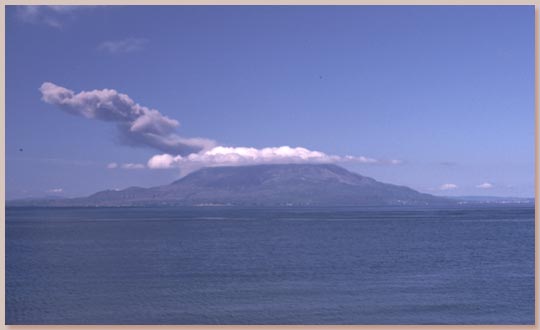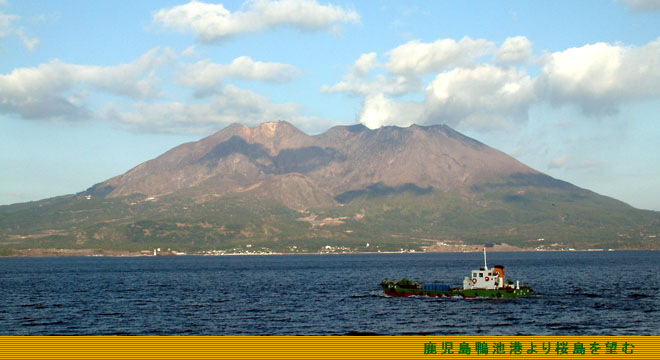I’m thinking Tokyo, Japan, Naples, Italy and Seattle, USA are near the top of the list. What other major population centers are near volcanoes that are bound to blow their tops sooner or later?
Of course, looking at it a different way, everything in the Northern Hemisphere is at risk from Yellowstone. It doesn’t blow often, but when it does, it’s a big’un, and it’s overdue.
Mexico City - Popocatepetl is close.
Mt. Hood lies immediately south of the Columbia river, if an eruption were to block the river, a likely scenario, the resulting flood would be catastrophic for a large metropolitan area.
The question about Rainier got raised a while ago. Short answer: it depends on the type of eruption and the volume/severity of it, and also which way any lava flow emerges. But most likely the Kent Valley is toast, Tacoma is only slightly less likely to get severe damage. Seattle will probably not be at risk from lava flow, but could conceivably be in the path of a pyroclastic cloud or other ash/gas fallout from the eruption.
Mount Hood is some distance from Portland, but upstream. Danger is debatable depending on a lot of factors.
Mt. Tanzawa is about 20 miles due east of the Kawasaki-Yokohama industrial-port complex, and less than 30 from Tokyo. Whether it’s active enough to be a danger is something I don’t know. Likewise two volcanoes directly adjacent to Kyoto and within fairly close proximity to Osaka.
Vesuvius is less than ten miles from downtown Naples, southwest along the coast, and of course directly above some coastal outliers in the metropolitan area. Etna could theoretically be a severe threat to Catania, Sicily, though its normal eruption is not the catastrophic style that would endanger a city.
I think the most active volcano is in Hawaii. Not the big exploding type but the oozing lava type. Don’t know if cities are involved but 80 houses have been destroyed since 1982. Also don’t know why this can’t increase to threaten more area.
There’s nothing around there large enough to be called a “big city.” The closest would be Hilo, which isn’t in the lava’s path. It’s more likely to be destroyed by a tsunami than by a volcano.
Actually, the entire planet is at risk from that one.
Any day now.
This link is a bit less sanguine:
Auckland? It straddles a dormant volcano field.
The summit of Mt. Hood is nearly 20 miles from the Columbia as the crow flies, and more if you follow the historical lahar flows to Hood River, so blocking the Columbia would be a 100,000 year event, :
There is big difference between affecting the flow and blocking the river.
Is Reykjavík (Iceland) at risk? I know Iceland is a volcanic hot spot.
Also, I don’t know whether Volcán de Agua is close enough to threaten Guatemala City.
Volcano Masaya is 20 km from Managua, Nicaragua. Its eruption in 4550 B.C. was one of the largest on Earth in the last 10,000 years. Cite.
Also, Ilopango is close by San Salvador, El Salvador. It was the site of a massive eruption in AD 260.
I don’t know where you got that, but there are no volcanoes “directly adjacent” to Kyoto. Take a look at this map, which shows Japanese volcanoes. The closest volcanoes are those of the Kannabe group, in northern Hyogo Prefecture, and that’s quite a way from the big Kobe-Osaka-Kyoto sprawl. By contrast, the Kanto plain, where Tokyo is, is literally surrounded by volcanoes, some of them, like mount Asama, are quite active.
I have to mention the city of Kagoshima. It’s on the left of this satelite image. On the right, is the island of Sakura-jima, home to the Ontake volcano. Here are a few quaint pictures of Sakura-jima:
http://storage.kanshin.com/free/img_31/315536/k1074144041.jpg
http://www.sabopc.or.jp/ippin/jijibaba/photo/02-01.jpg


panache was talking about Kilau’ea, though; your link is about Mauna Loa.
There are three volcanoes on the island of Hawai’i: Kilau’ea, Mauna Kea, and Mauna Loa. Mauna Kea, which is home to an observatory, is extinct. Kilau’ea is an active volcano, though it oozes more than it erupts. All of the major towns on the island (nothing there really can be described as a city) are pretty much on the opposite side of the island.
This map shows where the three lie in relation to one other. The town of Hilo is on the northeast coast of the island and closer to Mauna Loa and Mauna Kea. It’s easy to see how lava flows would endanger the Hilo, as well as Waimea and Kailua-Kona. Kilau’ea, however, is basically right on the coastline and threatens nothing. When lava does threaten homes, it does so at a sluggish pace. Hawaii is not as populated as Oahu or Maui, and IIRC that area is very rural. The number of people whose homes are endangered by Kilau’ea is pretty darn small.
Well, lava is pretty much lava, capable of endangering towns regardless of the name of the hill from which it flowed.
It has done a fairly good job of threatening Kalapana (pretty well wiped it out in 1990).
Incidentally, there’s a myth that Mount Royal in Montreal is an extinct volcano. Actually it appears to be a magma intrusion, a site where magma seeped into the earth’s crust and solidified, before the overlying rock was eroded, exposing the mountain. No danger there.
Five actually:
Mauna Loa
Mauna Kea (extinct)
Kilauea (erupting continuously since 1983)
Hualalai
Kohala (extinct)
Further to jovan’s observation, I actually lived in Kagoshima for a couple of months in the early 1990s. The volcanic ash fell like snow daily, covering cars and houses and trees - sometimes an inch deep. The volcano’s name, Sakura-jima, means “Cherry blossom island”. It isn’t an island, though, due to a massive eruption in the 1920s that created a land bridge to the mainland. You can take a bus tour of the volcano’s lower slopes, in which you can see abandoned temples embedded about six feet deep in pyroclastic debris.
Well worth a visit!